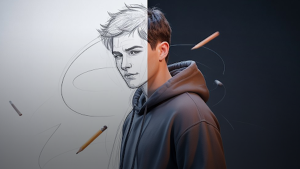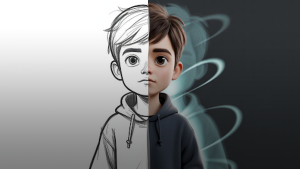Animation isn’t just “cartoons for kids.” It’s sweat. It’s timing. It’s hundreds of tiny movements stitched together like stop-motion magic. It’s where math and madness meet.
Behind every dancing llama or space robot is an army of animators who’ve probably skipped lunch, forgotten sleep, and argued for hours about a character’s eyebrow. If you think animation is easy, these fun facts about animation will flip your view.
Let’s peel back the layers—frame by frame.
1. The First Animated Film Was Basically a Moving Doodle
Picture this: it’s 1908. There are no smartphones, no CGI, and movies barely have sound. Then comes Émile Cohl with a film called Fantasmagorie. It’s a stick-figure fever dream. But it’s historic—it’s the world’s first fully hand-drawn animation.
Every frame was drawn on paper. Not on a tablet. Not with a mouse. With a real pen. It ran for just over a minute and looked like something a bored kid might sketch in a math notebook… except it made history.
2. Mickey Mouse Didn’t Just Squeak—He Rocked the Screen
When Steamboat Willie hit theaters in 1928, it wasn’t Mickey’s design that blew people’s minds. It was the sound. This was the first animation where every movement synced to music like a perfectly timed TikTok—before TikTok was even a thought.
Disney didn’t just animate a mouse. They changed the rhythm of storytelling forever.
3. Want One Second of Animation? That’ll Be 24 Drawings, Please
Here’s a number that hurts: 24 frames per second.
That means to make a single second of animation, you need 24 separate drawings. Multiply that by a 10-minute short? That’s 14,400 drawings. For a feature film? You’re in six-figure territory.
Think of it as digital stop-motion. Every blink, every footstep, every hair flip—drawn and refined one frame at a time.
4. Pixar’s Toy Story Took 800,000 Hours to Render
You read that right.
The world’s first 3D animated film, Toy Story, was a tech leap. But back then? Computers weren’t exactly fast. Rendering one frame took hours. The entire movie took around 800,000 hours to process—roughly 91 years on one computer.
Pixar, of course, used hundreds of machines. But still… Buzz and Woody weren’t built overnight.
5. Animators Study Life Like It’s Homework (Because It Is)
Ever wondered how characters move so naturally? It’s not guesswork.
Animators often record themselves acting out scenes—walking, jumping, crying, dancing like a fool—just to nail the feeling. Disney once brought real deer into the studio to help animate Bambi. No joke.
Before a character flies or fights, the animators crawl so they can learn to soar.
6. Voice Actors Usually Record Alone (No Group Chats Here)
You’d think animated characters record scenes together like a stage play. Nope.
Most voice actors record their lines in solo booths, sometimes months apart. One might be in L.A., another in London. They never hear each other’s lines until the final mix.
That chemistry you feel? It’s built by editors stitching everything together. Pure wizardry.
7. Japan Produces Over 60% of the World’s Animation
Let that sink in.
Anime isn’t just popular—it dominates. From binge-worthy epics like Naruto and Attack on Titan to chill slice-of-life series, Japan’s animation output is unmatched.
They’ve built an industry that runs like a well-oiled machine (even when the animators are running on caffeine and five hours of sleep).
8. A 3-Second Scene Can Take a Week (Or More)
Ever seen a character grab something, smirk, and walk away in 3 seconds?
Cool. That likely took a week.
Between blocking, animating, polishing, and fixing shadows or cloth physics—each micro-movement demands attention. It’s like trying to knit a sweater with tweezers.
The better it looks, the longer it probably took.
Creating high-quality animation takes serious time and skill. If you’re looking for custom animated videos—whether it’s 2D animation, explainer videos, or motion graphics—AnimatedVideos.co offers a full range of services that bring ideas to life without the stress of doing it all yourself.
9. Animation Isn’t Just for Movies and TV
We see cartoons and think “entertainment,” but animation is used in everything—education, medicine, architecture, courtroom reenactments, and even military training.
Need to explain how open-heart surgery works? Try animating it instead of acting it out. Want to test-drive a building before it’s built? Drop a 3D animation walkthrough.
Animation turns the invisible into something you can watch, understand, and remember.
10. Animators Leave Easter Eggs (Because Why Not?)
Look closely.
A number on a locker. A name on a street sign. Graffiti in the background. Animators sneak in personal nods to family, friends, birthdays, or inside jokes.
These tiny details don’t affect the story—but they keep the process fun for the folks who spend 12 hours a day adjusting shadows on a lamp post.
Most people think animation starts and ends with cartoons—but even the first 10 facts about animation can surprise you with how far the art form actually reaches.
11. Stop-Motion Is Like Playing With Dolls… Very Slowly
Movies like Coraline and The Nightmare Before Christmas use stop-motion. It means moving physical models a tiny bit, snapping a photo, then repeating the process.
One second of film? That’s 24 photos. A full-length film can take years. Every eyelid flick, every gust of wind—all done by hand.
It’s painfully slow. And insanely beautiful.
12. Most Animators Don’t Animate Every Day
This sounds weird, but it’s true.
Animators spend huge chunks of time reviewing feedback, adjusting frames, planning shots, coordinating with lighting or VFX teams, or waiting for renders. The actual “making characters move” part? That’s just a slice of the pie.
Animation is art. But it’s also logistics.
13. One Character = 10+ Specialists
Take any main character you love—say, a superhero or a funny animal.
They’re the result of dozens of hands. Designers sketch them. Modelers build them. Riggers add joints. Texture artists paint skin and clothes. Animators make them move. Lighters add mood. Render wranglers bring it to life.
Even a single eyebrow raise? That might go through five people.
14. Math and Physics Are Hiding in Every Frame
Animating a punch isn’t just about moving a fist. You’ve got force, speed, gravity, impact, and recoil. Bounce a ball? You need to know timing, squash, and stretch.
Even eye movement follows natural rhythm. Animation feels smooth because it’s rooted in the same physics that make things move in real life.
It’s like science in sneakers.
And with motion design becoming a key tool for brands, it’s no wonder that motion design is taking over marketing strategies in 2025.
15. Silent Characters Can Still Steal the Show
Wall-E barely says a word. So does Shaun the Sheep. But you feel what they feel.
Why? Because movement speaks. Body language, timing, and expression can hit harder than dialogue. Some of the most emotional moments in animation come without a single spoken line.
Sometimes, silence says everything.
16. Animators Reuse Stuff All the Time (Smart, Right?)
Reusing animation cycles or background art isn’t lazy—it’s efficient.
Disney did it in Robin Hood and The Jungle Book. Studios still do it today. If a character walks the same way ten times, you don’t redraw it ten times. You recycle it.
It saves time, budget, and sanity—while keeping quality high.
17. Animation Isn’t a Solo Job. It’s a Team Sport.
No one makes an animated film alone. Even short films often involve teams: writers, story artists, layout artists, background painters, effects teams, editors, and more.
Everyone has their piece of the puzzle. And when it clicks, it’s magic. But when it doesn’t? You’ll hear about it on Slack at 2am.
18. Some Animators Sneak Their Pets Into Scenes
Yep. Dogs, cats, birds—you name it.
Background animals in city scenes or forest shots are sometimes based on animators’ real pets. It’s their way of honoring their furry co-workers (who usually sit beside their desks during those 12-hour shifts).
So next time you see a dog wagging its tail in a crowd scene… that might be Max from accounting.
Key Takeaways for Animation Fans
- Animation is slow, precise, and full of hidden detail.
- It takes entire teams to bring even the smallest moment to life.
- Most of what you see has been tweaked, tested, and rendered until it’s perfect.
- Whether it’s 2D, 3D, or stop-motion, animation is part art, part science—and completely fascinating.
These animation facts remind us that what looks playful on screen often involves long hours, careful planning, and intense collaboration. Whether it’s through a visually engaging ad or an explainer video, animation is changing the way businesses grow their brand by creating content that resonates with audiences like never before.
Final Frame
The next time you watch an animated scene—a chase through traffic, a quiet hug, a dramatic face-off—know this: someone spent days, maybe weeks, maybe months, to make it land just right.
Every frame you see has a story behind it. A choice. A fix. A fight over a pixel. And a win.
Animation is the art of making things feel alive—even if they’re drawn, modeled, or made of clay.
And honestly? That’s pretty incredible.





